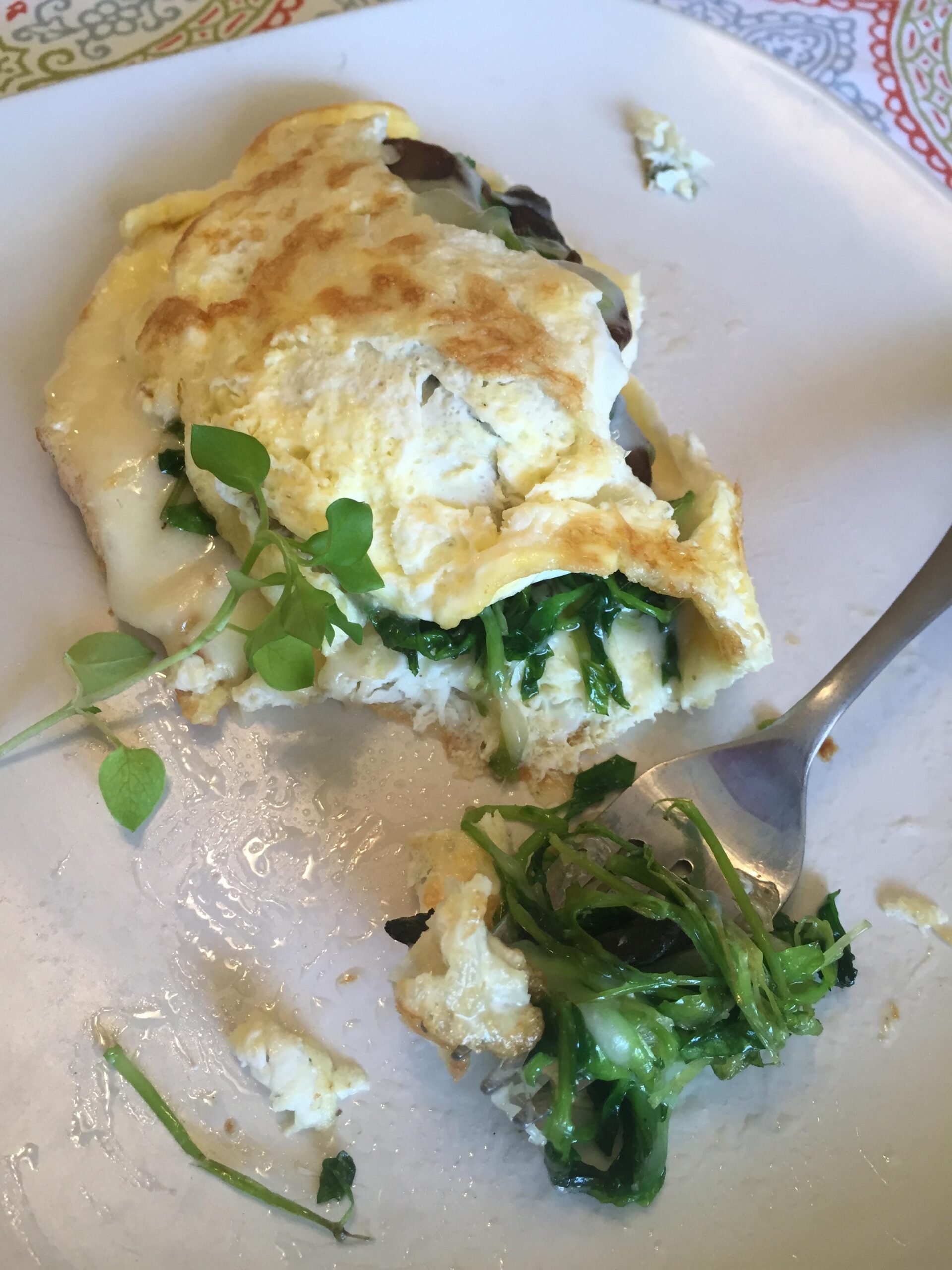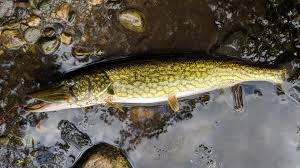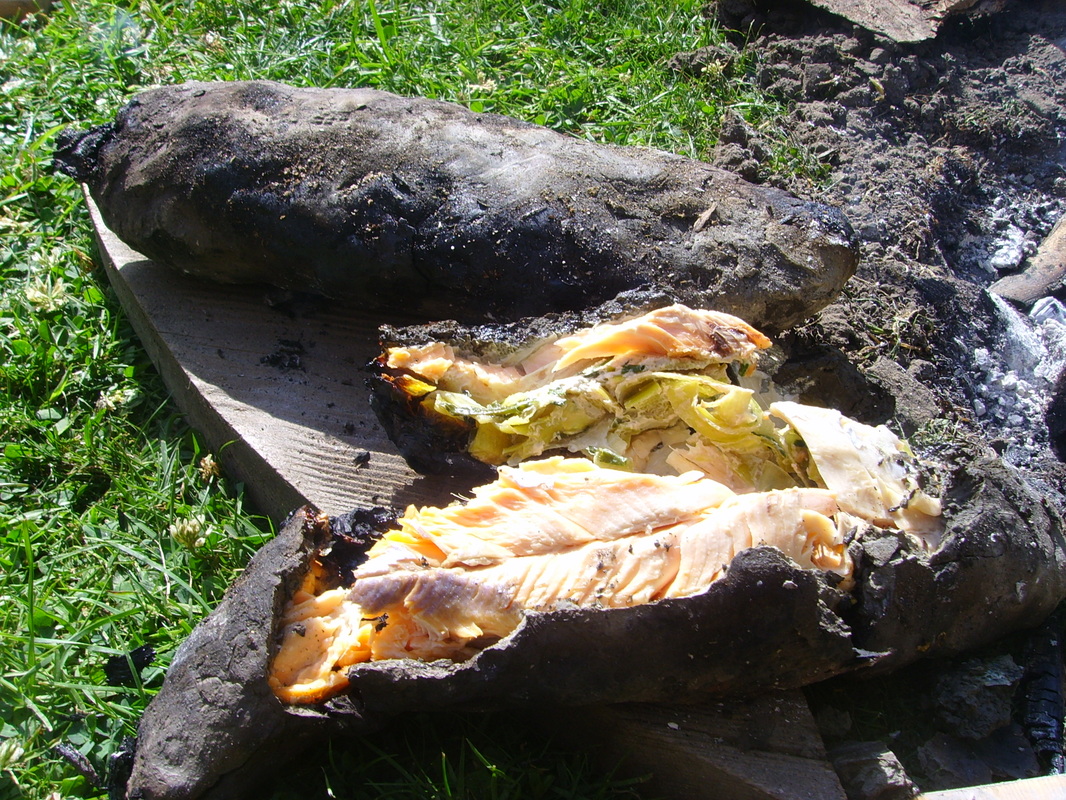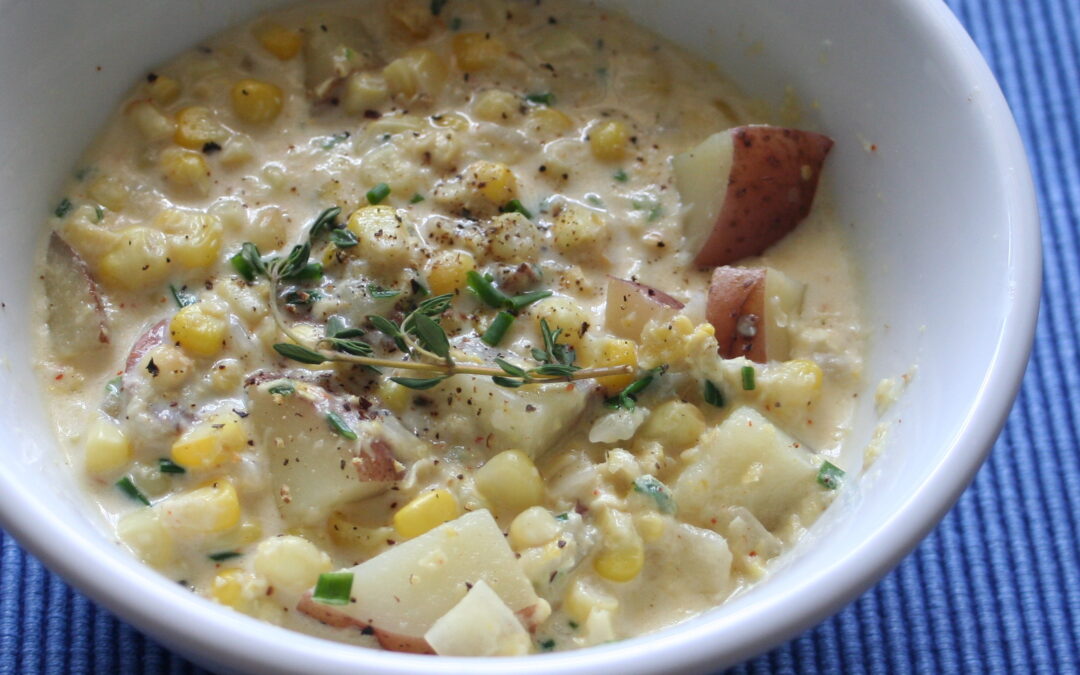The forests of the Piedmont and nearby Blue Ridge Mountains provided a rich landscape in which to forage and farm when the first known humans to inhabit the North Carolina Piedmont arrived about 10,000 years ago. Archeological evidence suggests that these PaleoIndians and their descendants, the Archaic Indians, sustained their communities with wild foods and other wild material resources that surrounded them.
The emergence of agriculture about 4000 years ago marks the evolution from the Archaic culture – which depended primarily on foraging wild foods – to the Woodland Indian culture. Woodland Indians continued to follow most of the foraging practices of their ancestors, but they also began clearing fields to grow crops like sunflowers, squash, beans and corn. During this early period of agriculture, Woodland settlements grew larger, more permanent and increasingly located along stream valleys, where the soils were most suitable for farming.
With the help of the Woodland Indians living in the region, early colonists swiftly adopted local traditions of food production, processing, preservation and preparation. The colonists shared the crops and food traditions from their homelands in return. Colonists letters and journals acknowledged the benefits of this new knowledge in their community. For example, one early colonist noted in her journal that her “family benefited from the initial friendship with the Indians and their advice on what vegetables grew best and even how to prepare them. This included the introduction of corn into our lives.” In these early years of colonization, such cultural exchanges were common and often mutually beneficial to both colonists and Native peoples; however, as time progressed, these relationships would change drastically.
Food was likely more varied and more plentiful in Colonial America than most of the colonists had known in their home countries. A travel journal published in 1711 listed an amazing diversity of foods produced in North Carolina, both Native and European, along with some notes on how these foods were prepared. Forest foods like nuts, fruits, and wild vegetables are heavily featured along with fish, game, corn and other staple crops.
The most popular method of food preservation was by drying, and this applied to meats, fruits, nuts, grains, and vegetables (cultivated and wild). Large caches of dried corn, peas, beans, pumpkin, and squash were common with many Southeastern tribes. Sugars and syrups made from the sap of a variety of different tree species including maple, birch, black walnut, and butternut were documented by many early writers. Critically important to both Woodland Indians and colonists alike, salt was needed for seasoning and preservation.
Foods From the Forest
Nuts and Fruits
Foods from the forest included a great diversity of nuts which were shelled and eaten out of hand, ground up and added to soups, broths and stews, and dried and finely ground to be used as flour in breads and cakes. Chestnuts, acorns, hazelnuts, black walnuts, chinaquapin and hickory nuts were commonly used by Woodland Indians living in the land that would become North Carolina.
Highly valued wild fruits gathered from forest understory included crabapples, cherries, mulberries, persimmons, grapes (muscadine and scuppernong), strawberries, plums, blueberries, blackberries, raspberries, and elderberries. European colonists learned how to forage for these these wild fruits and also began cultivating the fruits that they brought from home, including cherries, figs, peaches, plums, currents, apples, pears, quinces, apricots, and gooseberries.
Nuts were shelled and eaten out of hand, added to soups, broths, stews, and were dried and ground into flour for bread and cakes. Berries and fruits were added to bread, boiled with any other available vegetables or wild plants, or dried and stored for later use. Colonists foraged these wild fruits and cultivated domesticated fruits brought with them from home.

Nuts like this black walnut were eaten on their own and used in soups, broths, stews, and dried and ground into flour for bread and cakes. Berries and fruits were added to bread, boiled with any other available vegetables or wild plants, or dried and stored for later use. Credit: Wikimedia Commons CC BY-SA 3.0

Muscadine grapes (pictured) were just one of the many understory forest fruits that were highly valued by Native Americans and European Colonists. Credit: Wikimedia Commons CC BY-SA 2.0

The figs cultivated by European colonists were just one of many domesticated fruits that were swiftly adopted by Native Americans. Credit: Wikimedia Commons CC BY-SA 3.0

Nuts like acorns, black walnuts, chestnuts, and chinkapin were ground up by hand to make flours similar to the method pictured above. Credit: Wikimedia Commons CC BY-SA 3.0
Wild Vegetables
Many forest floor plants were used as vegetables and herbs by Woodland Indians. Early spring greens like chickweed and pokeweed were especially appreciated at the end of winter by both Native peoples and colonists. A dish of greens and eggs – both plentiful ingredients in the spring – were cooked together as a favorite tonic for restoring strength and health after months of eating only dried foods during winter.

Wild potatoes, wild onions, wild lettuce, miner’s lettuce (pictured), juniper berry, wild ginger, ramps (wild garlic), chickweed, wild mustard greens, lamb’s-quarter, and pokeweed, mayapple, soloman’s seal, jack-in-the-pulpit, early blue violet, wild bergamot, butterfly milkweed, and mushrooms are just a few examples of vegetables and wild edibles that were often foraged. Credit: Wikimedia Commons CC BY-SA 3.0

Chickweed (pictured above) is a wild spring vegetable of the region. It was often foraged and cooked along eggs to make “greens and eggs” – a restorative first fresh meal after a winter of dried foods. Credit: Wikimedia Commons CC BY-SA 4.0

Early blue violet was a beautiful and nutritious addition to both Native and Colonists plates. Credit: Wikimedia Commons CC BY-SA 3.0

This foraged chickweed omelette is a modern take on the ages old spring tonic “eggs and greens.” Credit: HenoftheWoods
Wild Fish and Game
The forests and waterways of the Piedmont provided good hunting and fishing. Large animals like deer, bear, bison, and elk provided meat as well as many other useful materials. Venison and bear were staple meats of the Woodland peoples. Bear fat was prized as a preservative. Smaller animals of all kinds also found their way into Native American and colonist’s meals, including beaver, skunk, raccoon, opossum, squirrels, pigeon, wild ducks, turkeys and geese, partridge, pheasant, dove, lark and crows. Both groups also routinely ate turtles, snakes, and frogs.
The tongues of deer and bison, the tails of beaver, and “young wasps in the nest before they can fly” were considered delicacies. Bear fat and venison suet were preserved and used in the preparation of food. Both the Native peoples and colonists cured bear meat into bacon and bear lard made excellent bread. Woodland peoples quickly adopted the keeping of the domesticated cattle and swine brought from Europe by the colonists.
Large animals like deer, bear, bison, and elk provided meat as well as many other useful materials. Venison and bear were staple meats. Bear fat was prized as a preservative. Smaller animals of all kinds also found their way into both the Woodland people’s and the colonist’s meals. Meat was typically fire-roasted, boiled, smoked, or preserved.
Common cooking methods included boiling, roasting, smoking, and baking in a coating of mud. Meat was roasted on a sharpened stick inserted in the ground and leaning toward an open fire. Meats were boiled in animal skin or earthenware pots, either suspended from a tripod over the fire or by placing heated stones into the skin with the meat being cooked.
Large quantities of fish and shellfish were gathered annually by the Woodland Indians using a great diversity of methods: traps, weirs, spears or arrows, poisoning streams, netting, trot-lines, angling, by the bare hand, and by attracting fish to night fires. Their catch was typically preserved for winter by drying and smoking. Oysters were dried in quantities enough to last the winter and often transported long distances back to villages. The types of fish harvested depended on indigenous species particular to any river or region. Common species in the Catawba River watershed likely included pickerel, rockfish (bass), trout, perch, sunfish, suckers, catfish, and eels.
In addition to the preparation of soups and pottages, the methods of cooking fish included roasting over a framework of twigs and coating the entire fish in mud and baking it thus coated in hot coals. When the hardened mud coating was broken away the scales and skin came away with it leaving only the tender flesh.

Beaver skunk, raccoon, opossum (pictured), squirrels, pigeon, wild ducks, turkeys and geese, partridge, pheasant, dove, lark and crows were some of the smaller animals enjoyed by colonists and Catawba. Both groups also routinely ate turtles, snakes, frogs. Credit: Wikimedia Commons CC BY-SA 3.0

Common species of fish in the Catawba River likely included pickerel (pictured), rockfish (bass), trout, perch, sunfish, suckers, catfish, and eels. Credit: Wikimedia Commons CC BY-SA 4.0

Fish was coated in mud and then cooked over fire (pictured here). Other meats were also prepared this way. Boiling, frying, smoking, and preserving were also common. Credit: Earlyworks
Foods From the Farm
Cultivated plants and grains played an important role in the Woodland Indian diet thousands of years before first European contact. Corn, beans and squash were produced in large quantities on Woodland farms, along with sunflowers, pumpkin, and melons, tomatoes, and many types of peppers. With the arrival of European colonists, Woodland peoples added many new crops to their farms such as Irish potatoes, sweet potatoes, leeks, onion, cabbage, and garlic, as well as new varieties of melons, turnips, and parsnips.
Corn, a staple crop of the Woodland peoples, was eaten in many ways. Green corn (immature ears) was roasted. Dried corn was boiled with meat and beans, or ground and made into bread, grits, porridge, mush, and hominy. Corn was also used to make a popular drink by draining and straining the liquor from boiled dried corn.
The Woodland Indians cultivated many different varieties of corn each having different qualities best suited to certain uses or methods of preparation, such for meal, flour, or hominy. They also planted corn in succession through the growing season to prolong the green corn harvest.

Corn (pictured here dried) was eaten in many ways. Corn remains a staple food in the Piedmont diet today. Credit: Public Domain

Sweet potatoes (pictured above) originated in tropical South America were they have been an important food for more than 5000 years. Sweet potatoes were swifly adopted by Southern Europeans after Columbus brought the crop back to Spain in 1500. By the early 1700’s, sweet potatoes were widely grown by Native Americans living in the Southeast region. Credit: Wikimedia Commons CC BY-SA 3.0

Leeks (pictured above) travelled with the first European colonists to the Carolina colony and were swiftly adopted by Native American farmers in the region. Credit: Wikimedia Commons CC BY-SA 2.0
Savoring the Past
Some of the South’s most favorite foods have been handed down from generation to generation reaching back to the very first Native Americans who brought corn to present day North Carolina. Corn on the cob, cornbread, and hushpuppies are all foods that were invented by Native Americans. Early colonists didn’t just adopt the word for cornbread; they also adopted Native American ways of preparing cornmeal, adapting the recipes to suit European palates.
Native Americans commonly prepared cornbread from a paste of crushed green corn kernels or as a batter made by adding water, salt, and animal fat to cornmeal. They would use a thin paste to make flatter cakes, resulting in something more like a cornmeal pancake. They treated a thicker batter as bread dough, shaping by hand into loaves for baking.
Is all this talk of cornbread making you hungry? Try a taste of history by making a batch of colonial cornbread sometime soon. You’ll be glad you did!
Learn more about the history of cornbread, colonial cornbread recipes and cooking, including the cornbread recipe shared here at Savoring the Past.
Colonial Cornbread Recipe
Ingredients
- 1 cup Milk
- 3 tbsp. Butter
- 1 tbsp. Molasses
- 1 pinch Salt
- 3 cups Cornmeal
- ½ cup Wheat Flour
Place milk in a saucepan over low heat to scald. Add the butter, molasses, and salt, and stir well. In a separate bowl, mix three cups of cornmeal and a half a cup of wheat flour. Combine with milk mixture. You can cook this batter in two different ways. Make a “common loaf” by pouring into a greased pie pan and baking in a preheated oven at 375 degrees for about 30 minutes. Make some “journey cakes” or “Johnny cakes” by forming patties about a half an inch thick and three or four inches around and fry them in a pan.
Sources
Cornpone: A Borrowed Term for a Borrowed Staple. S. Milam. Southern Foodways Alliance.
North Carolina’s First Colonists: 12,000 Years Before Roanoke. S. Claggett. NC Office of State Archaeology
North Carolina History Project – Burke County 1777. J. Martin. John Locke Foundation, Raleigh, NC
Native American Foodways: An Overview. 2011. V. Rumble. The Historic Foodie’s Blog
Sweet Potato: A Brief History. IPM Program, University of Missouri
Your Food Has Ancestors Too. The History of Food. NCpedia
18th Century Cornbread. J. Stanley. Savoring the Past

